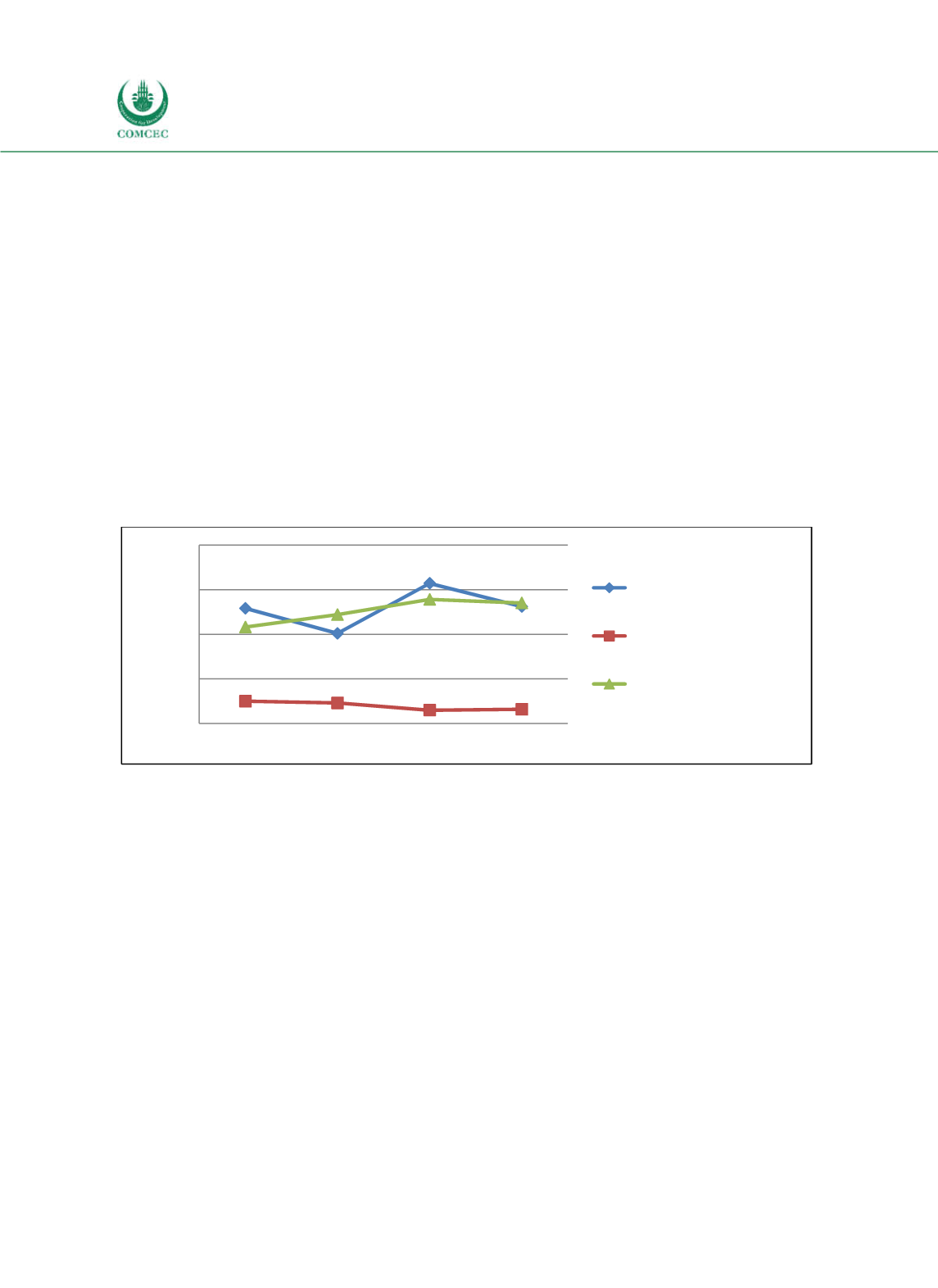

Improving Public Debt Management
In the OIC Member Countries
82
Fund for Agricultural Development (IFAD), and the OPEC Fund for International Development
(OFID). Bilateral creditors, which represent 46% of total central government debt, are for
instance the Kuwait Fund, France, Russia, Romania, India, China, Nordea Bank, Libya, Iraq,
Germany and Spain (OECD 2014). Most commercial creditors come from Brazil and China
(OECD 2014).
The largest share of external debt is denominated in U.S. Dollar, which has decreased between
2006 and 2010 and increased again beyond 2010. The share of Eurodenominated debt, SDR
and other currencies, however, decreased after 2010. As of 2014, U.S. Dollar denominated debt
represents 66.3%, followed by other currencies (14.6%), Special Drawing Rights (10.3%) and
Eurodenominated debt (7.7%). The remainder is debt denominated in Japanese Yen (1%).
The average maturity of external debt is much higher than the respective maturity of domestic
debt (see Figure 45). Whereas the average maturity of external debt fluctuates between ten
and sixteen years, the average maturity of domestic debt remained relatively stable between
2011 and 2014 ranging from 1.5 years to 2.5 years. With respect to total public debt, a positive
trend in the average maturity can be observed.
Figure 4-5: Mozambique - Average Maturity of Public Debt
Sources: MoEF (2012, 2015), calculations by the Ifo Institute.
The weakness of domestic debt markets is also reflected in interest rate developments.
Whereas the nominal interest rate on forex debt increased slightly from 0.4% in 2006 to 1.5%
in 2016, the average real interest rate on domestic debt increased in the same period from
0.4% to 6% (see Figure 46). The fluctuations in the interest rate can be attributed to the
highly volatile inflation, which ranged from 1.1% to 7.9%, but also to the increasing interest
rates, which the government had to pay on newly issued government securities. While the
yields on government securities with a four year maturity increased from 7.5% in 2013 to
12.75% in 2016, the interest rates on 3 year government securities increased from 8.9% in
2013 to 11% in 2016 (BVM 2016). This increase is predominantly the result of the increased
mistrust following the revelation of the previously undisclosed loans.
0 5 10 15 20
2011
2012
2013
2014
Years
Average Maturity,
External Debt
Average Maturity,
Domestic Debt
Average Maturity, Total
Debt
















